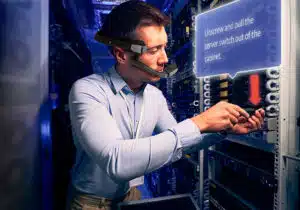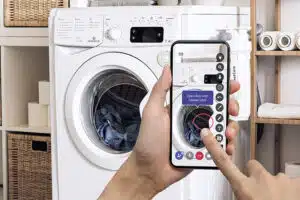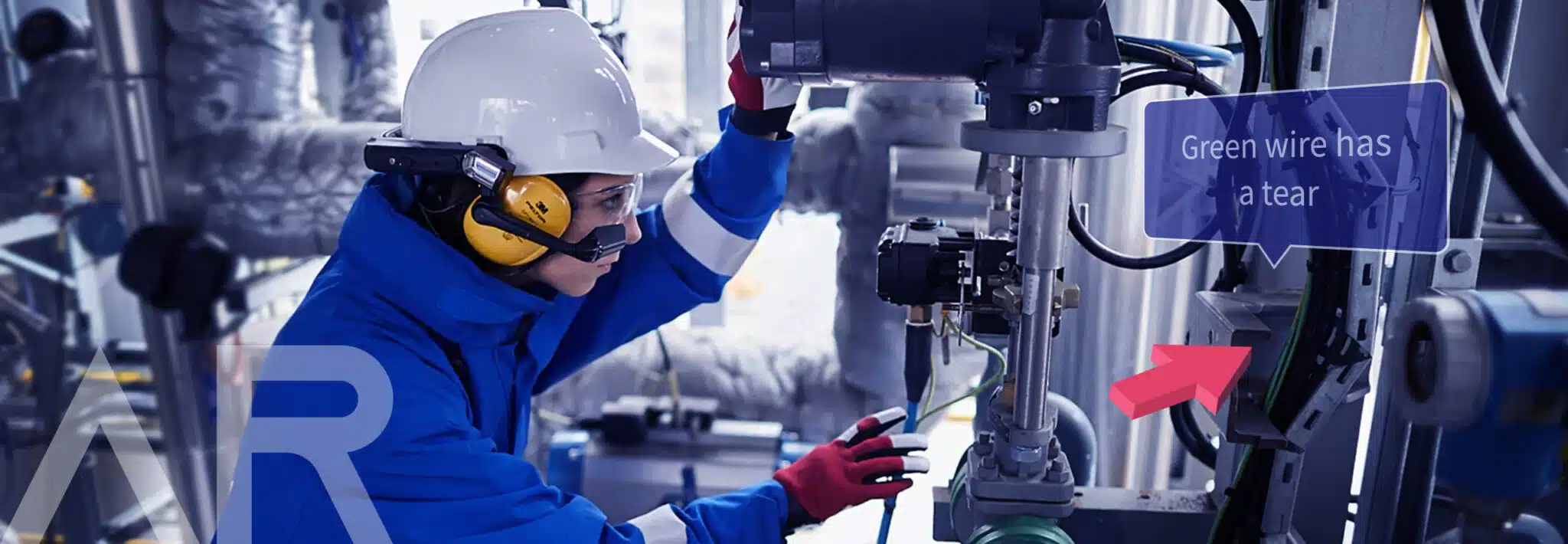In recent years, the realm of augmented reality (AR) has expanded beyond its roots in entertainment and gaming, making significant strides into the enterprise sector. As businesses seek innovative solutions to enhance productivity, improve training, and streamline operations, the adoption of augmented reality hardware has emerged as a transformative strategy. Let’s take a look at the rapidly evolving augmented reality hardware landscape, exploring key players such as , Apple, Magic Leap, Microsoft, as well as the familiar devices of smartphones and tablets.
 RealWear Navigator 520 and HMT 1Z1: Pioneering Hands-Free Interaction
RealWear Navigator 520 and HMT 1Z1: Pioneering Hands-Free Interaction
RealWear has established itself as a pioneer in enterprise-grade AR hardware, focusing on creating hands-free solutions that are particularly valuable for industries where employees need to work while keeping their hands free and maintaining situational awareness like energy and utilities, telco, and manufacturing.
The RealWear Navigator 520 is a ruggedized head-mounted display designed to withstand harsh industrial environments. It offers a high-resolution micro-display that can be comfortably viewed even in bright sunlight, making it an ideal choice for field technicians and maintenance personnel. The device boasts a robust voice recognition system that allows users to control the device without using their hands, a crucial feature for professionals who need to keep their focus on their tasks.
On the other hand, the RealWear HMT 1Z1 takes the hands-free concept a step further, with an intrinsically safe device used near flames like in the oil and gas industry. The HMT 1Z1 is the only intrinsically safe wearable out there, and so sets itself apart from other vendors.
Apple Vision Pro: Bringing consumer style to augmented reality hardware
Apple’s premier entry into the enterprise AR hardware landscape has been long awaited, and the Apple Vision Pro lives up to the expectations. Leveraging Apple’s design prowess and technological innovation, the Vision Pro will offer a sleek and lightweight design that seamlessly integrates AR into professional workflows. With its advanced optics, precise tracking, and intuitive gesture controls, the device will empower users to interact with digital content in a natural and immersive manner.
The Vision Pro’s compatibility with a wide range of Apple software and services further enhances its appeal. From architectural design and medical diagnostics to logistics and retail, Apple’s AR hardware is poised to make a substantial impact on various industries by unlocking new possibilities for visualization and collaboration.
Magic Leap 2: Blurring the Line Between Reality and Digital
Magic Leap joined the hardware line up with its promise of spatial computing that merges the physical and digital worlds. The Magic Leap 2 continues this mission, offering a lightweight and comfortable headset that delivers highly realistic and interactive augmented experiences. The device’s high-quality optics and advanced tracking capabilities enable users to seamlessly blend digital content into their surroundings, making it a valuable tool for design, prototyping, and interactive storytelling.
One of the standout features of the Magic Leap 2 is its ability to create shared AR experiences, allowing multiple users to interact with the same digital content simultaneously. This collaborative potential holds immense promise for industries such as architecture, education, and entertainment, where real-time interaction and visualization are critical.
Microsoft HoloLens 2: Bridging the Gap Between Virtual and Physical Worlds
Microsoft has been at the forefront of enterprise AR with its HoloLens series, and the HoloLens 2 continues to push the boundaries of what’s possible. Building on the success of its predecessor, the HoloLens 2 offers improved ergonomics, a larger field of view, and enhanced gesture recognition. These features contribute to a more natural and intuitive interaction with holographic content, making it an essential tool for industries ranging from aerospace to healthcare.
One of the key strengths of the HoloLens 2 is its integration with Microsoft’s suite of productivity tools, including Microsoft 365 and Dynamics 365. This integration enables seamless collaboration, data visualization, and training, all of which have the potential to revolutionize the way businesses operate and innovate. Despite the promise of this headset, the longevity is in question, as Microsoft made significant cuts to their mixed reality toolkit team.
Smartphones and Tablets: Ubiquitous AR Platforms
 While specialized AR hardware devices offer unique capabilities, it’s important not to overlook the widespread use of smartphones and tablets as AR tools. The ubiquity of these devices means that AR experiences can reach a broader audience without the need for dedicated hardware. ARKit for iOS and ARCore for Android have democratized AR development, enabling businesses to create compelling AR applications for customer engagement, marketing, and remote assistance.
While specialized AR hardware devices offer unique capabilities, it’s important not to overlook the widespread use of smartphones and tablets as AR tools. The ubiquity of these devices means that AR experiences can reach a broader audience without the need for dedicated hardware. ARKit for iOS and ARCore for Android have democratized AR development, enabling businesses to create compelling AR applications for customer engagement, marketing, and remote assistance.
Smartphones and tablets also play a crucial role in complementing dedicated AR hardware. They can serve as remote control devices, secondary displays, or supplementary information sources when paired with hands-free AR devices like the RealWear HMT 1Z1 or Microsoft HoloLens 2. This synergy allows for more versatile and adaptable AR solutions tailored to specific use cases.
Conclusion: Navigating the Future of Augmented Reality Hardware
The augmented reality hardware landscape is rapidly evolving, driven by technological innovation and the pursuit of enhanced efficiency and collaboration. Use cases are the true deciding factor as to whether hands-free technology is the best fit or safest option. Consider spatial awareness and personal protective equipment when shopping around for the best technology for your needs. We’ve explored the offerings of key players like RealWear, Apple, Magic Leap, and Microsoft; it’s that the convergence of the physical and digital realms holds immense promise for industries across the board. Whether it’s hands-free interaction, seamless integration into professional workflows, or the blurring of reality and digital content, AR hardware is transforming the way businesses operate and unlocking new avenues for creativity and productivity.
As businesses navigate this landscape, it’s crucial to consider factors such as device capabilities, compatibility with existing infrastructure, and the specific needs of their industry. The choice between specialized AR hardware, like the RealWear HMT 1Z1 or Apple Vision Pro, and leveraging ubiquitous platforms like smartphones and tablets will depend on the unique requirements of each enterprise. By staying informed about the latest developments and understanding the capabilities of different AR hardware options, businesses can chart a course toward a future where augmented reality becomes an integral part of their operations and success.
